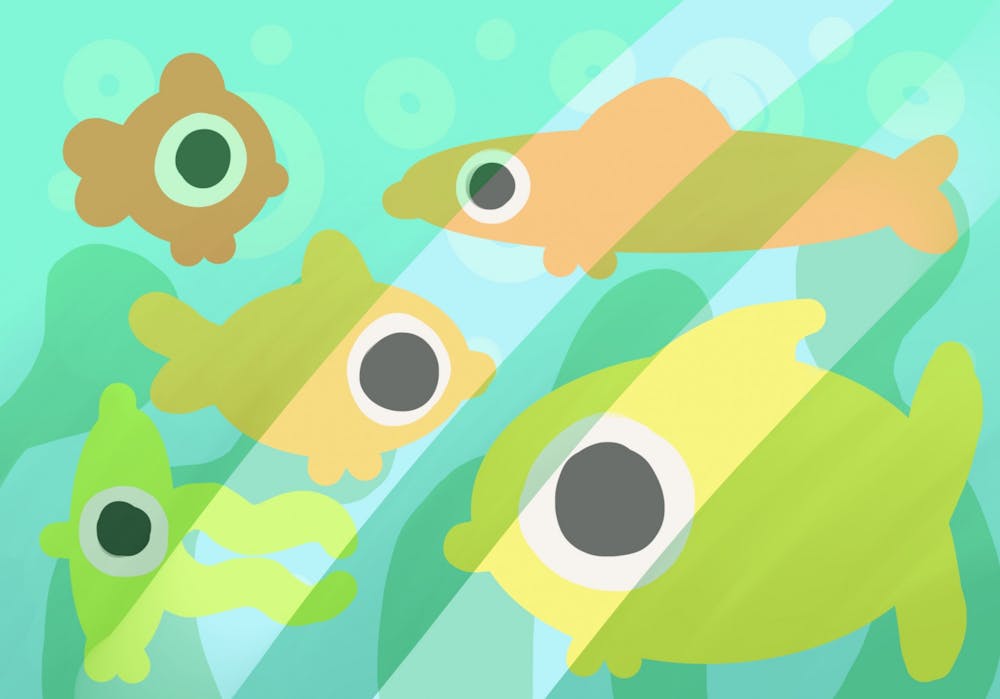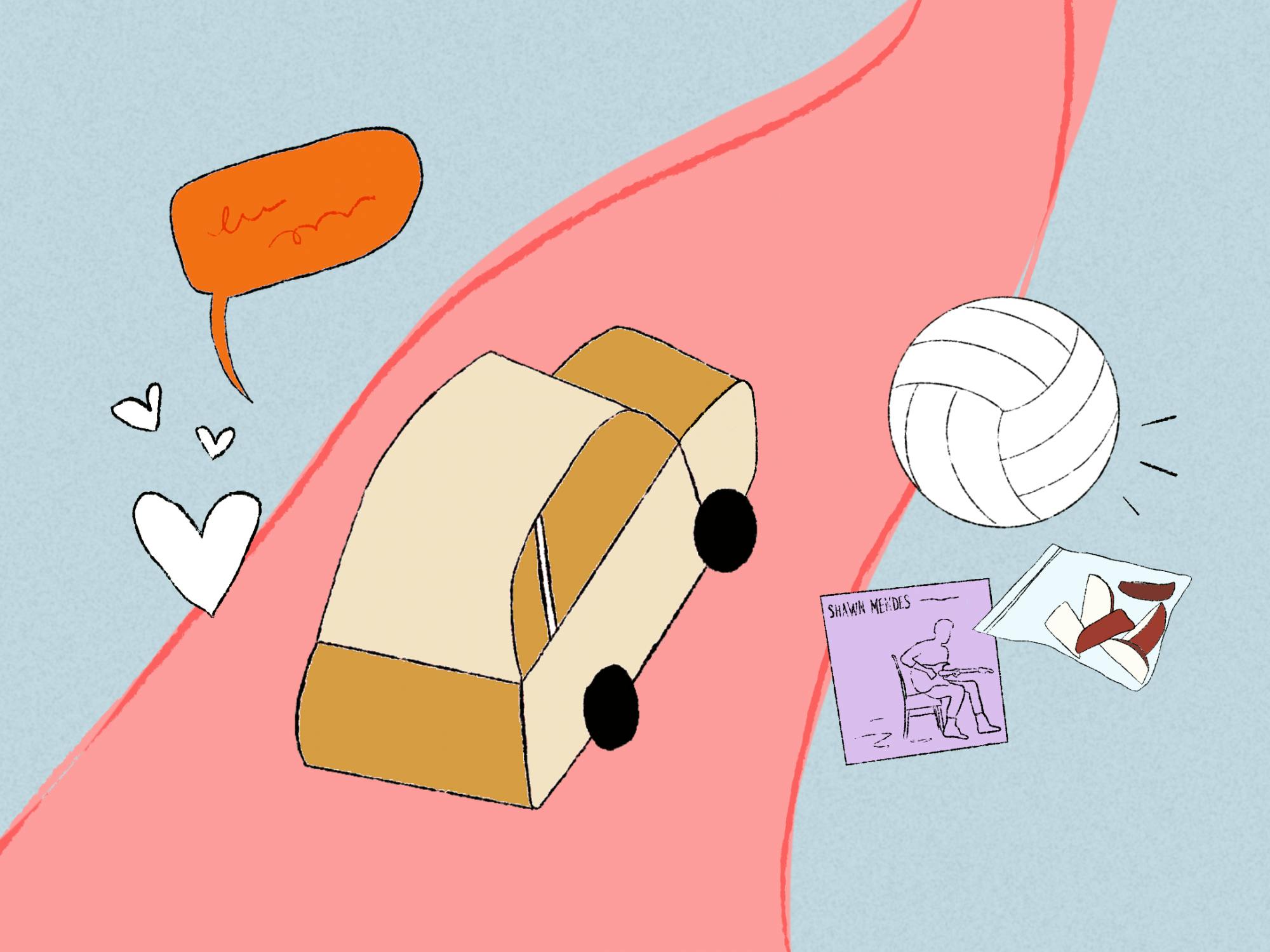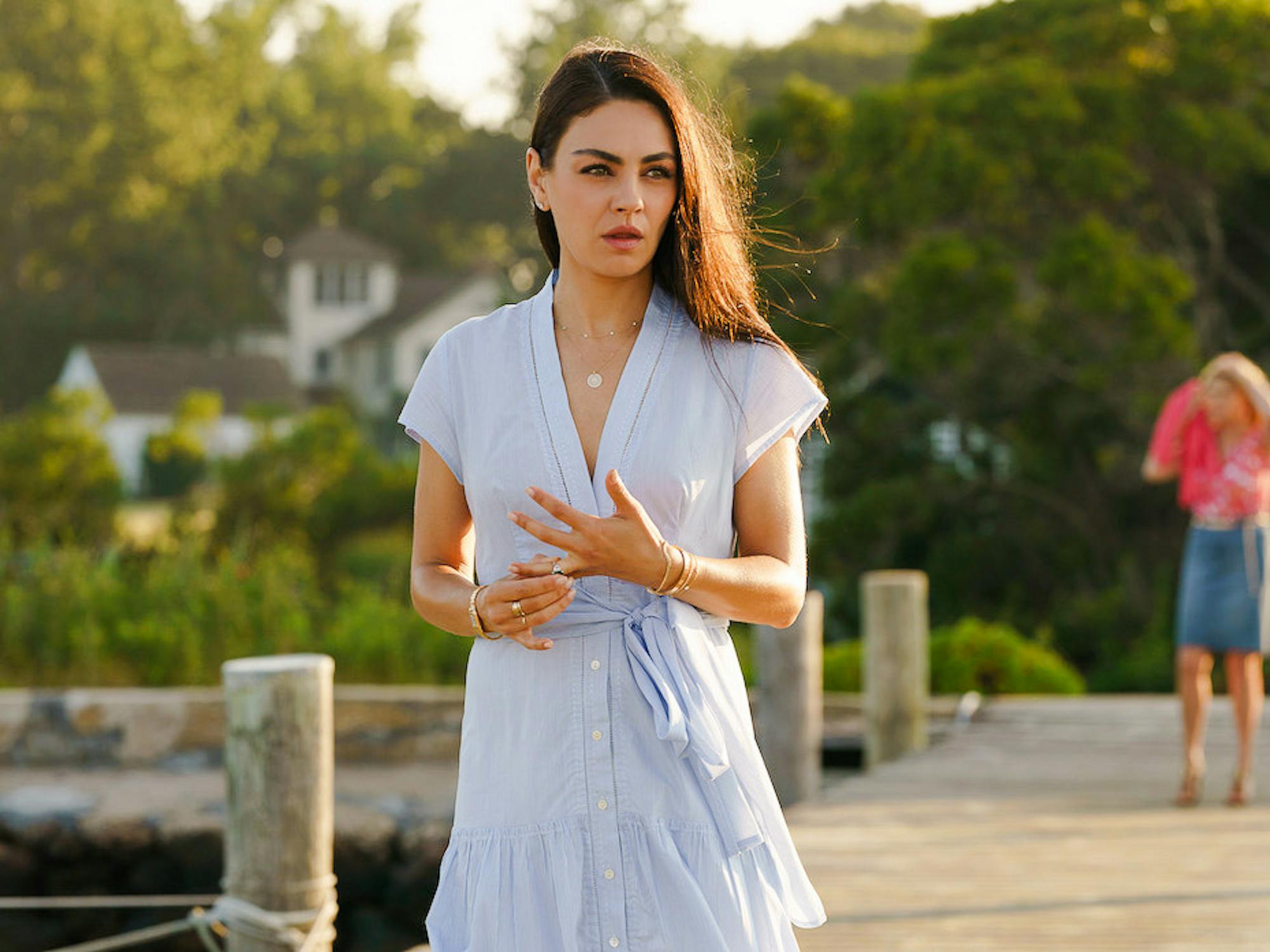My oldest sister, Nikila, brought Radish home as a party favor when I was in the third grade. He was a purple betta fish, our family’s first pet, and the first animal I would ever form a bond with. I would crawl into my sister’s room every day after school to catch a glimpse of Radish swimming in circles in his fishbowl and, on occasion, attacking his reflection on the glass. For nine-year-old me, peering into his bowl and watching him wiggle around brought me boundless joy; I would stare at him and imagine myself in his position, gliding through the water.
As my sister nurtured Radish, I learned from the sidelines what it takes to keep someone alive: You have to feed them, entertain them, and make sure that they have a clean environment. One day, as my sister and I were washing Radish’s bowl, he leapt into the sink full of soap. Though she put him back into the bowl as soon as she could, later that day, he sank to the bottom of his bowl, and I heard my sister sobbing. The soap had poisoned him. I wanted to cry but couldn't find the tears. It was my first experience with death.
My family wouldn’t have fish again for another two years, until my middle sister, Abi, brought home two goldfish from the county fair as a prize for throwing darts at balloons. Though my sister affectionately named them Rupert and Gregory, my mom immediately Indianized their names to Rishi and Ganga. Excited by the prospect of having more fish, I quickly moved them from their plastic bags into Radish’s old bowl and watched them grow.
When I came home from school each day, I waddled up to their bowl and peered inside to see what was going on. They looked back at me sometimes, but they mostly just floated disinterestedly in the water. Their bowl was barren. It was just two fish and the filth that they produced. They seemed bored, so I begged my mom to buy new accessories for their bowl. I asked her if she would want to live in our fish bowl—in a barren wasteland of water and feces. After much discussion, we finally agreed to get some blue rocks to decorate the bottom of the bowl and a rock arch to add some topological diversity.
Rishi and Ganga seemed happier. Now, when I came home, they would swim through the arch and bite at the rocks. From then on, I began to ask my mom for more and more accessories for them. We upgraded their bowl to a 10 gallon tank, added more colorful rocks and playthings, and even lined the tank with wallpaper to make them feel like they were in the ocean. I hadn’t yet formally investigated the literature demonstrating that environmental changes and exciting surroundings enhance the cognitive capacities of fish, but I cared about them and wanted to provide them with more than the bare minimum for survival. Along with the tank’s extra space and new decor, I got more goldfish to keep Rishi and Ganga company. The fish had gone from my weird obsession to an actual aesthetic part of our house.
Then, in the seventh grade, Ganga died. I noticed before I went to school and cried the entire day. My friends, guidance counselors, and teachers were sympathetic but bemused by my tears. One friend even tried to comfort me by recounting the time his cat knocked over their fish tank and ate all of his fish. He laughed as he told me that story. Others could affirm my feelings, but could not understand my grief over a single goldfish. For me, Ganga was a member of the family. He was an individual and had his own peculiarities: He never swam to the top of the tank for food and randomly jolted around the tank to create a current in the water and mess with the other fish.
This mismatch in our reactions to an animal dying desensitized me. Clearly, I was overreacting by crying over the death of a fish. After all, who cares about fish? Over the next couple of years, the goldfish would continue to sink to the bottom of their tank. My only reaction was to take them out, lay them to rest in the lake behind my house, and pray that their little souls would attain moksha.
As my goldfish were dying, I decided to keep them company by getting more fish. At the fish store, I was fascinated by the diversity of gilled creatures—from exotic eels to pufferfish to loaches to goldfish. But, at the same time, I felt sad. It seemed that, at the bottom of every tank, there were throngs of fish that were either dead or on the verge of death. I would peer into the tank and try to look at anything other than these moribund fish, but my eyes were always drawn back to them. They sat pathetically at the bottom of the tank, opening and closing their mouths, clinging to every passing second.
Still, I brought home four black skirt tetras and four red-eye tetras, and gave them some very eccentric names: Pizza, Hut, Taco, Bell, Pachacuti, Belly, Fish, and Stewart. They seemed very merry in my tank—playing with each other, swimming freely, and voraciously devouring any food that I poured in. Watching how much they enjoyed playing with each other, my fascination with the fish only grew. I became increasingly invested in their lives and mythologized about friend groups that existed within their little fish community. Obviously, Pizza & Hut and Taco & Bell would be awesome couples. I began to think of them more as interesting individuals and less as mindless drones. I loved them.
During my senior year of high school, I went out of town for three days to visit colleges and left my fish under the care of my mom, who had never had to look after them before. When I came back at 3 a.m. on Sunday, I took a look into my fish tank to make sure they were okay. The first thing that I noticed was that it was cloudy. The next thing I noticed was that there was decaying flesh floating at the top of my tank. Then finally I noticed that there were no fish. As I was sobbing, my mom explained to me that our AC broke while I was away. And, since I lived in Florida, the temperature in the tank got unbearably hot and boiled them to death. I let these individuals, whom I ostensibly loved, die a slow and agonizing death. I gave up keeping fish after that. How could I continue?
After coming to Brown, I became extremely involved in animal rights—perhaps a natural outgrowth of my love for fish as a teen. I learned about the scale of animal agriculture, saw the unspeakable things that happened on factory farms, and wanted to do something to help these suffering animals. Still, while I intellectually understood the reasons to support animal rights, I couldn’t connect to the strife of farmed animals until I saw masses of fish crammed in tanks at the supermarket.
Among the fish confined to the tank, there was one fish in particular—a fat catfish—that made eye contact with me. As he wriggled his body in distress, his bright and kind eyes locked with mine. We stared at each other, and as each second passed, a smile slowly began to grow on his face as he opened his mouth and moved his whiskers. His face was filled with hope, even as he was surrounded by 20 other fish, most of whom seemed to have resigned themselves to their imminent and inevitable fate. This fish kept swimming forward, as though he, with just a little more willpower, might somehow escape the cramped four-by-six-inch tank.
I had to look away. This fish was fighting for his life, but I knew the date of his death. I wanted to do something, but what was there to do? Perhaps I could break the glass of the tank and liberate him, but then what? He would just die of asphyxiation instead of decapitation. I could try to buy him alive, but I had no means of taking care of him, let alone bringing him home. He was no different from the fish that I used to care for and love, and I was powerless to help him, just as I had been before. The only things I could offer were a shred of sympathy, a place in my memory, and a prayer to a God I hoped existed. It had been three years since I had last cried over a fish, but there I stood in the supermarket, bawling my eyes out over a fish killed for a forgettable meal by someone who never cared about his life.
Reading news about how climate change is affecting our oceans, I often feel gloomy. There are predictions that we will have more plastic than fish in our oceans by 2048. Giant garbage patches made predominantly of fishing nets are strangling marine life. Overfishing is destroying habitats of fish, like the Great Barrier Reef. To me, these facts aren’t sad because pollution or environmental degradation are vacuously bad—I wouldn’t be invested in plastic waste on another planet, because there isn’t life there. Rather, I’m concerned by the staggering loss of aquatic life that fishing and environmental harm produce.
More specifically, I’m saddened not directly about the number itself, but about the fact that those quantities represent the termination of an individual life, happening over and over again. When my fish died, I didn’t cry because a certain number of them had died. I cried about each one and their idiosyncrasies, because they individually mattered to me: Hut’s tendency to hide behind the arch whenever someone loomed over the tank, Pachacuti’s ritual of swimming over to nudge my finger whenever I stuck it in the water. I have no personal connection to the trillions of sea creatures that die each year, but I recognize that they’re individuals who want to live, the same as any of the fish I’ve ever cared for—and that’s reason enough for why their lives have value.





